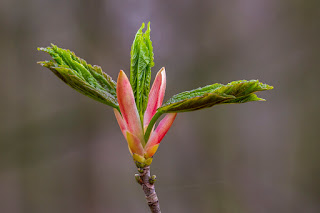Walking in Woods
For assignment 4 I have continued with my
theme of walking, this time walking in the Lincolnshire Limewoods that I
encountered on my walk from Assignment 3.
The Lincolnshire Limewoods are relicts of the
original primeval wilderness in this part of England. After the last ice age the whole of the region was forested with small leaved lime and the Limewoods are one of the few
remaining links to wilderness in Lincolnshire.
My
formative years were spent roaming these woods, developing a connection with
nature that was to last a lifetime.
Walking allows me to slow down and fully experience and
appreciate the landscape that I travel through; to be a ‘human being’, rather
than a ‘human doing’. It not only provides exercise and improves health;
it nourishes the mind, providing spiritual refreshment through contact with
nature, allowing for the study of the appearance of things. When walking in woodland, it is easy to lose
and find oneself again, to reflect, meditate and absorb the natural world
around me. When walking I enjoy seeking
out and photographing the intricate detail of nature, the ordinary, the detail that
it is easy to walk past without noticing; I like to uncover the hidden aspects
of a place, to ‘make visible the invisible’.
It allows me to reconnect with the world.
This summer I have walked in woods in Lincolnshire, The
Lake District, Scotland and the Cevennes and Vercors mountains of France. Photographing nature’s intimate landscapes
means that the images could be anywhere: in rural settings, our edgeland
wildernesses, beach and saltmarsh, mountains and even industrial settings and
gardens.
I share my feelings about nature through photography, but
it leaves me with many questions. Why am
I affected in the way I am? Why are
these things here? Why and how are they
as they are? Is the world as it is
because it was made by a creator god, or is the Earth and everything on it, and
the rest of the universe, simply governed by the laws of physics? If we stop noticing these things will we
allow them to disappear?
Having reflected on this post and on the feedback from my peer hangout group, I feel that my images are still too literal and do not ask the questions that I ask myself. I have portrayed a nature that is perfect. I need to go back and experiment with styles of photography that are more ambiguous and make the viewer ask the same questions of themselves. I need to look deeper into the landscape of the wood; at its darker, more uncomfortable side. This is going to entail putting this assignment submission on hold for a period while I rethink it.
Having reflected on this post and on the feedback from my peer hangout group, I feel that my images are still too literal and do not ask the questions that I ask myself. I have portrayed a nature that is perfect. I need to go back and experiment with styles of photography that are more ambiguous and make the viewer ask the same questions of themselves. I need to look deeper into the landscape of the wood; at its darker, more uncomfortable side. This is going to entail putting this assignment submission on hold for a period while I rethink it.

































































